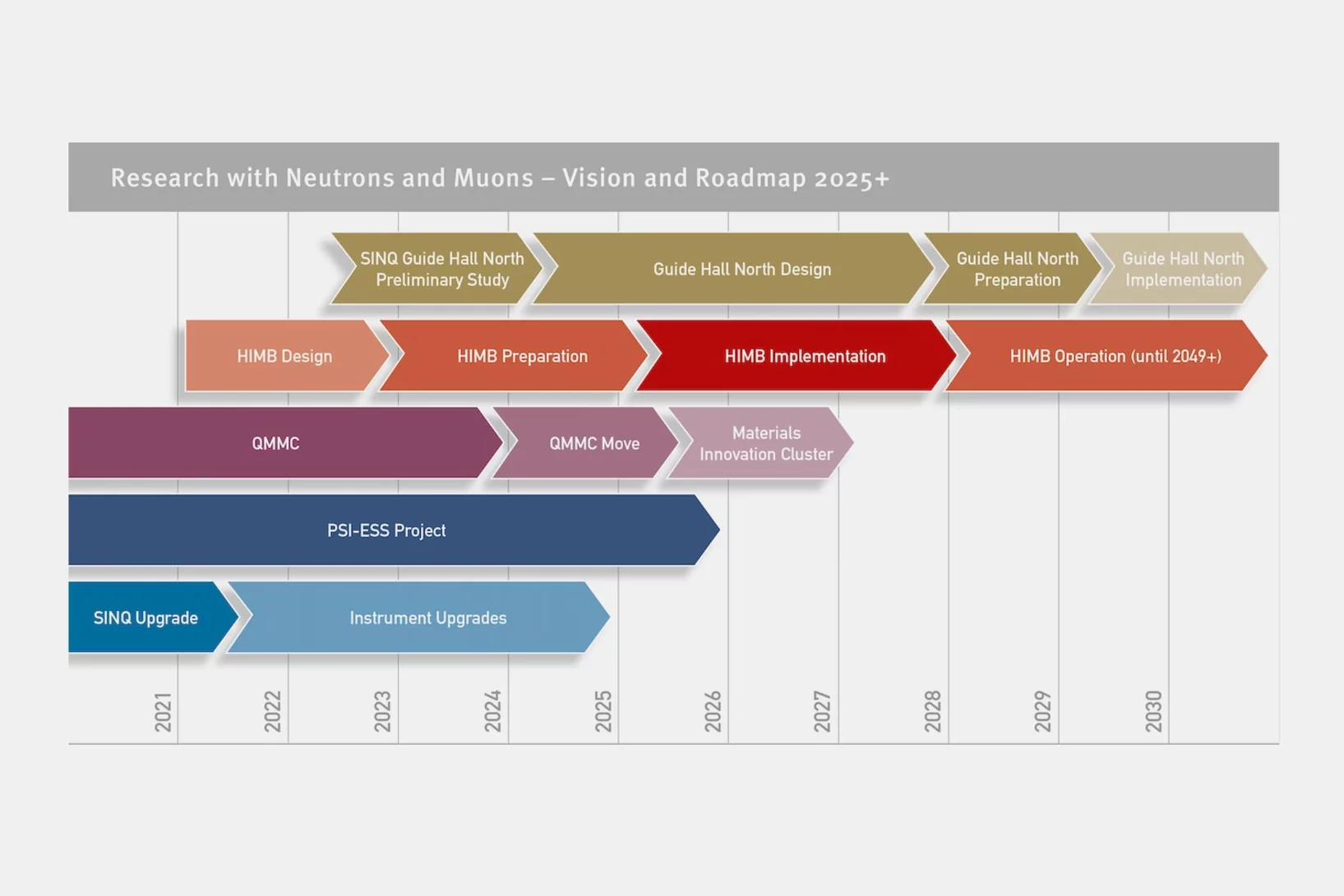The PSI Center for Neutron and Muon Sciences uses neutrons and muons to explore and understand matter and materials.
Recent News & Scientific Highlights
Generating structured foam via flowing through a wire array
Efficient manufacturing methods could unlock foams with tailored, anisotropic properties. Conventional foam production methods rely on the self-arrangement of bubbles, typically leading to isotropic materials, or involve intricate additive layering processes. This study presents a simple, passive technique to modify the foam structure. A set of thin parallel wires ...
Discovery of Nodal-Line Superconductivity in Chiral Crystals
Chiral crystals, whose key feature is the structural handedness, host exotic quantum phenomena driven by the interplay of band topology, spin-orbit coupling (SOC), and electronic correlations. Due to the limited availability of suitable chiral-crystal materials, their unconventional superconductivity (SC) remains largely unexplored.
Here, the discovery ...
Ferroaxial density wave from intertwined charge and orbital order in rare-earth tritellurides
The discovery of the axial amplitude mode—commonly referred to as the Higgs mode—in charge density wave systems, such as rare-earth tritellurides, indicates the presence of a hidden order. A theoretical study proposed that this axial Higgs mode arises from a hidden orbital texture of the charge density wave, which produces a ferroaxial charge order.
However, experimental evidence ...
WOPM2025 at PSI - Workshop on optically-pumped magnetometers
From August 6 to 8, the 2025 workshop on 'Optically-Pumped Magnetometers' took place at PSI with a full day of Summer School lectures, followed by scientific sessions attended by 145 researchers from institutions worldwide.
Observation of Magnetic Pseudogap Behavior in Phosphorus-Doped Silicon
The recent discovery of a Kondo condensate in phosphorus-doped silicon (Si:P) presents its significant potential for achieving novel many-body quantum states. Si:P exhibits Kondo condensation, characterized by an energy gap in the electronic density of states, while the precise nature of its magnetic state has yet to be determined.
Here, we utilize ...
Hydration- and Temperature-Dependent Rotational Dynamics and Water Diffusion in Nanocellulose
Nanocellulose is a promising alternative to fossil-derived materials, but its development is hindered by a limited understanding of cellulose–water interactions. Herein, quasielastic neutron scattering (QENS) is used to investigate how hydration and temperature affect the localized rotations in cellulose nanocrystals (CNC) and the diffusion of mobile water. QENS reveals ...
Our Facilities
Latest CNM publications
-
Thilakan KK, Ghorai S, Liu W, Häggström L, Lindgren F, Pomjakushin V, et al.
Revealing complex magnetic interactions in Fe2P-based compounds: a study using Mössbauer spectroscopy and neutron diffraction
Journal of Materials Chemistry A. 2025; 13(36): 30128-30139. https://doi.org/10.1039/d5ta03047a
DORA PSI -
Graham JN, Islam SS, Sazgari V, Li Y, Deng H, Janka G, et al.
Pressure induced transition from chiral charge order to time-reversal symmetry-breaking superconducting state in Nb-doped CsV3Sb5
Communications Physics. 2025; 8(1): 318 (9 pp.). https://doi.org/10.1038/s42005-025-02235-6
DORA PSI -
Ruiz-Bardillo A, Asenjo-Sanz I, Verde-Sesto E, Porcar L, Kohlbrecher J, Pomposo JA, et al.
Bond-reversibility effects on self-crowding of unimacromolecular nano-objects
ACS Macro Letters. 2025; 14: 1389-1395. https://doi.org/10.1021/acsmacrolett.5c00512
DORA PSI -
Hayrapetyan A, Tumasyan A, Adam W, Andrejkovic JW, Benato L, Bergauer T, et al.
Search for a neutral gauge boson with nonuniversal Fermion couplings in vector boson fusion processes in proton-proton collisions at √s=13 TeV
Physical Review Letters. 2025; 135(6): 061803 (22 pp.). https://doi.org/10.1103/srvm-f1h3
DORA PSI












